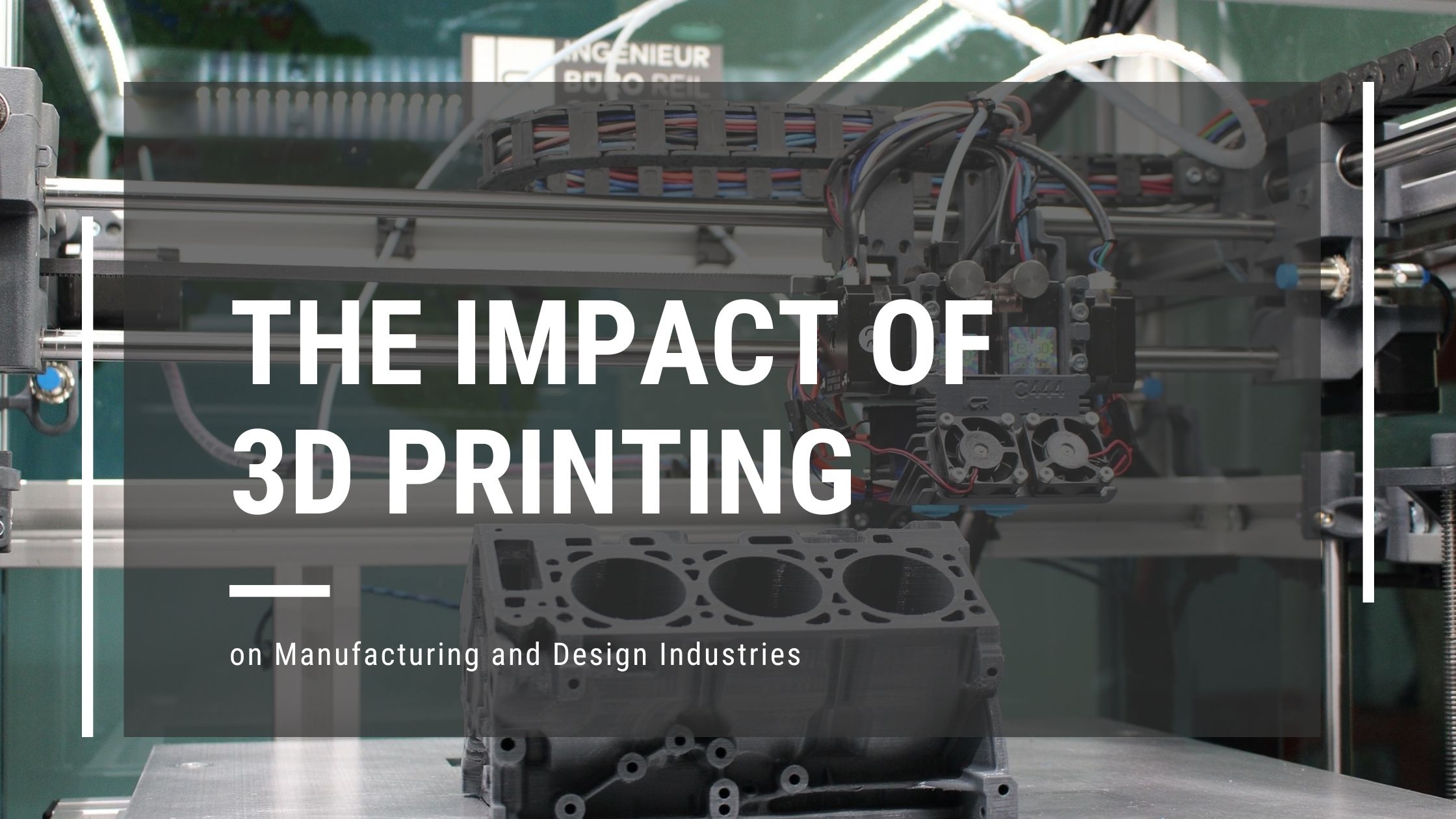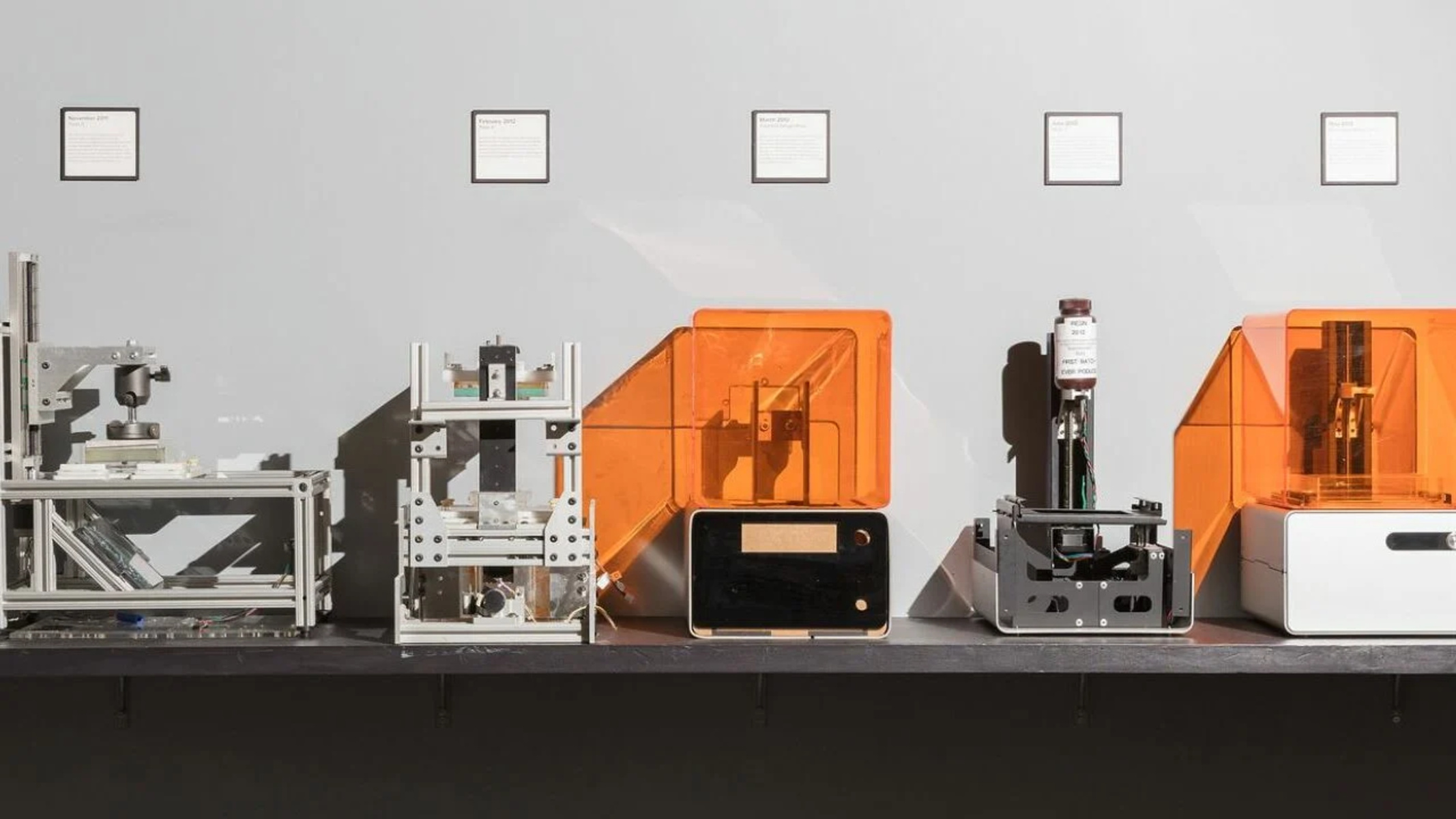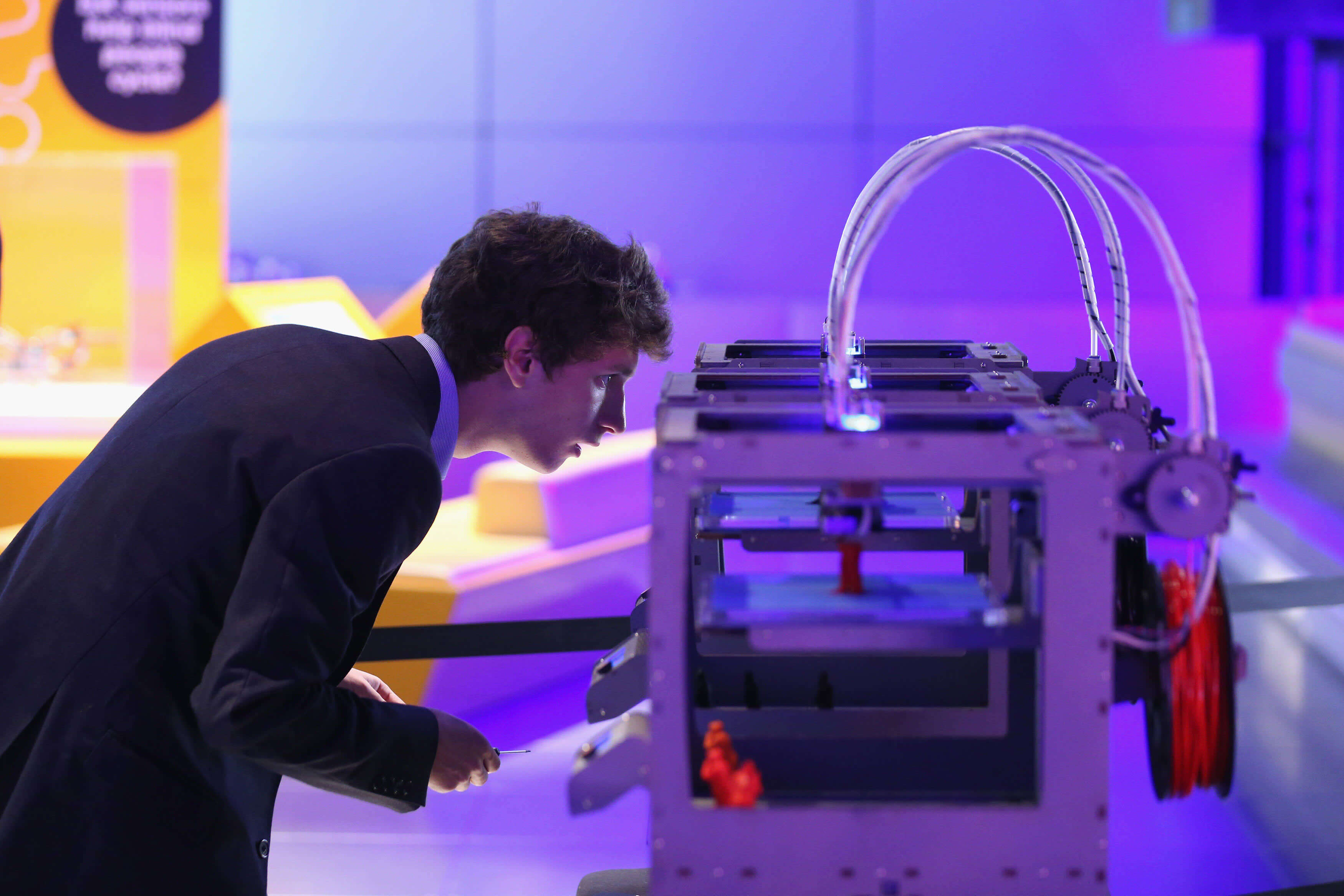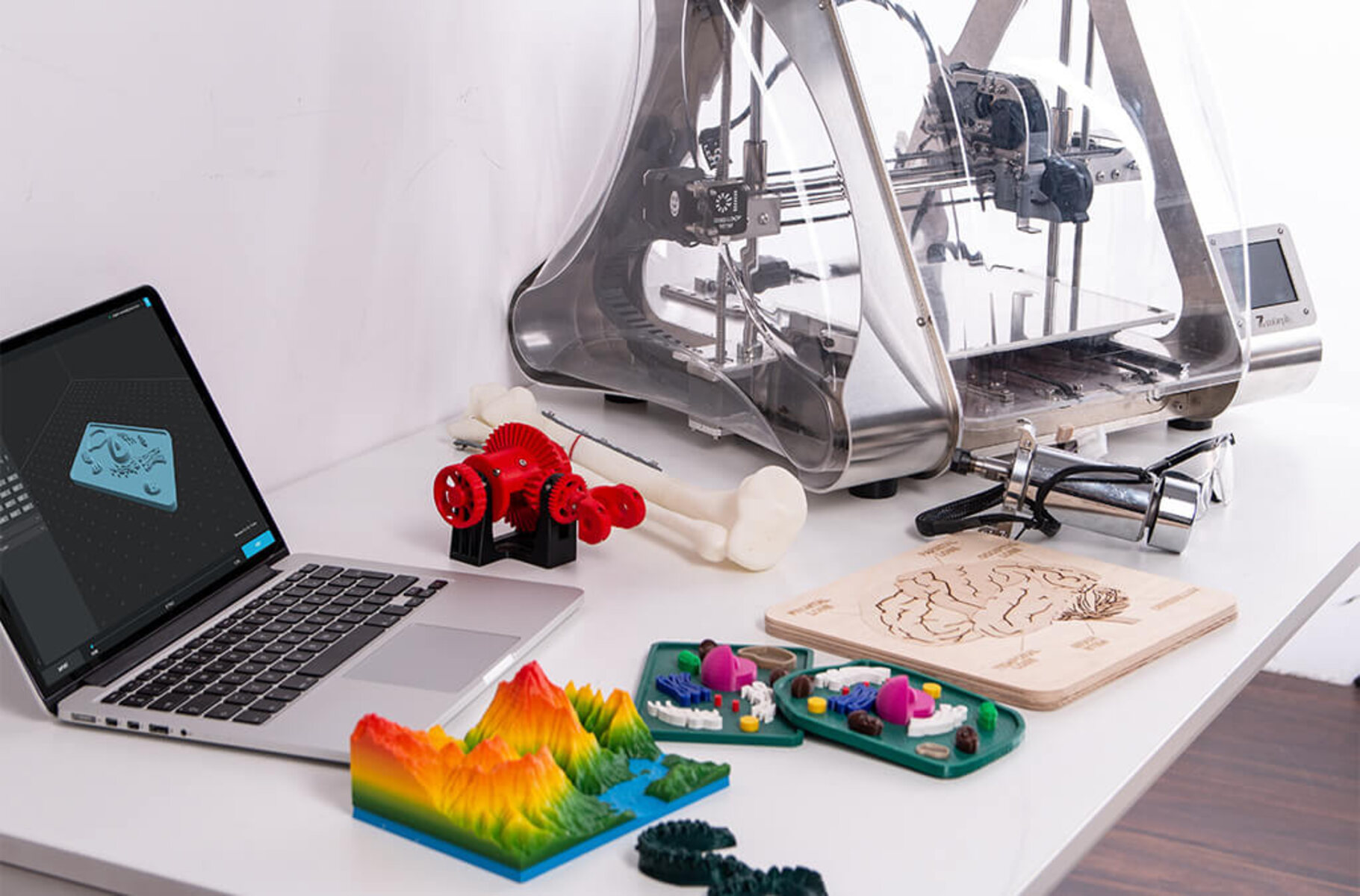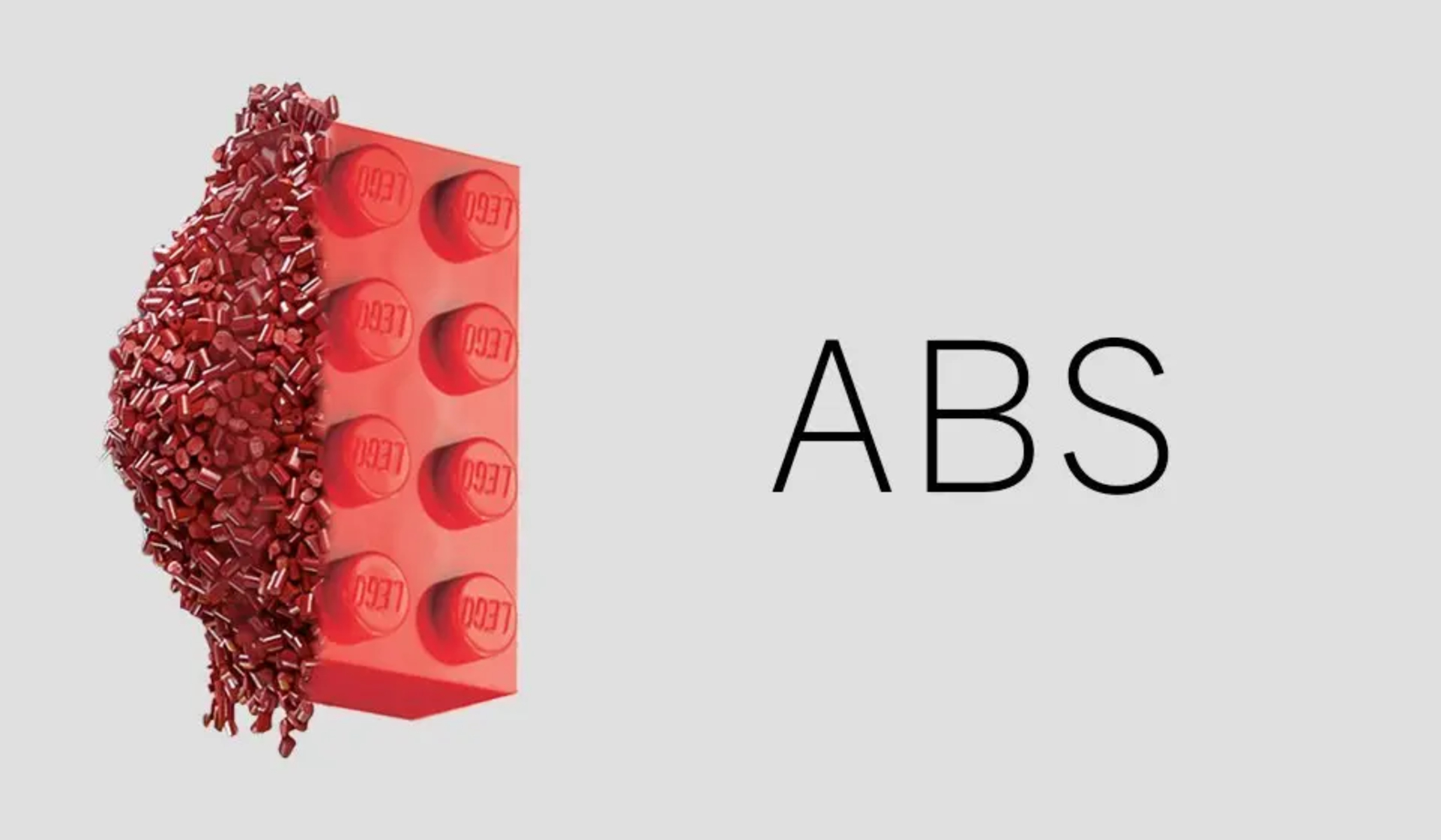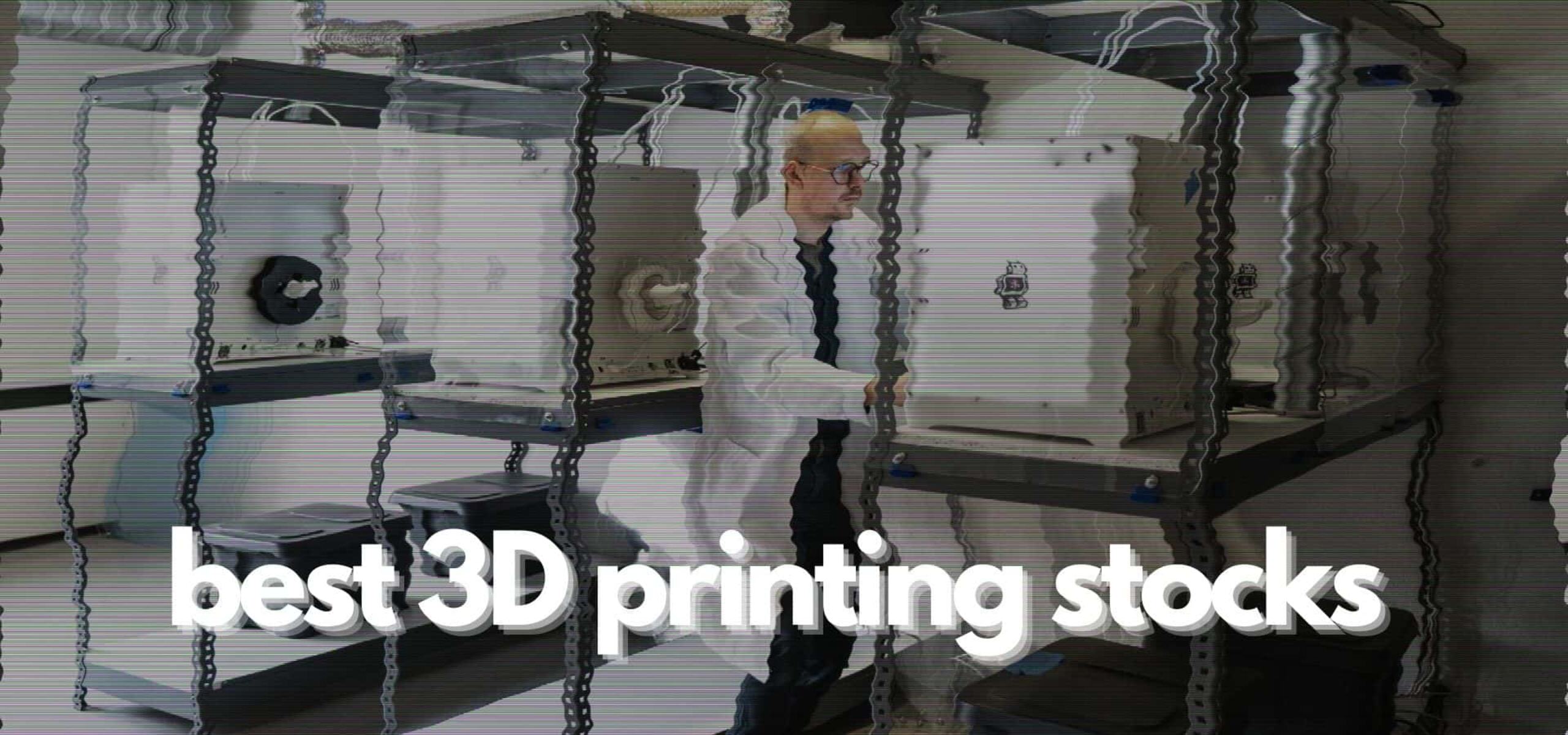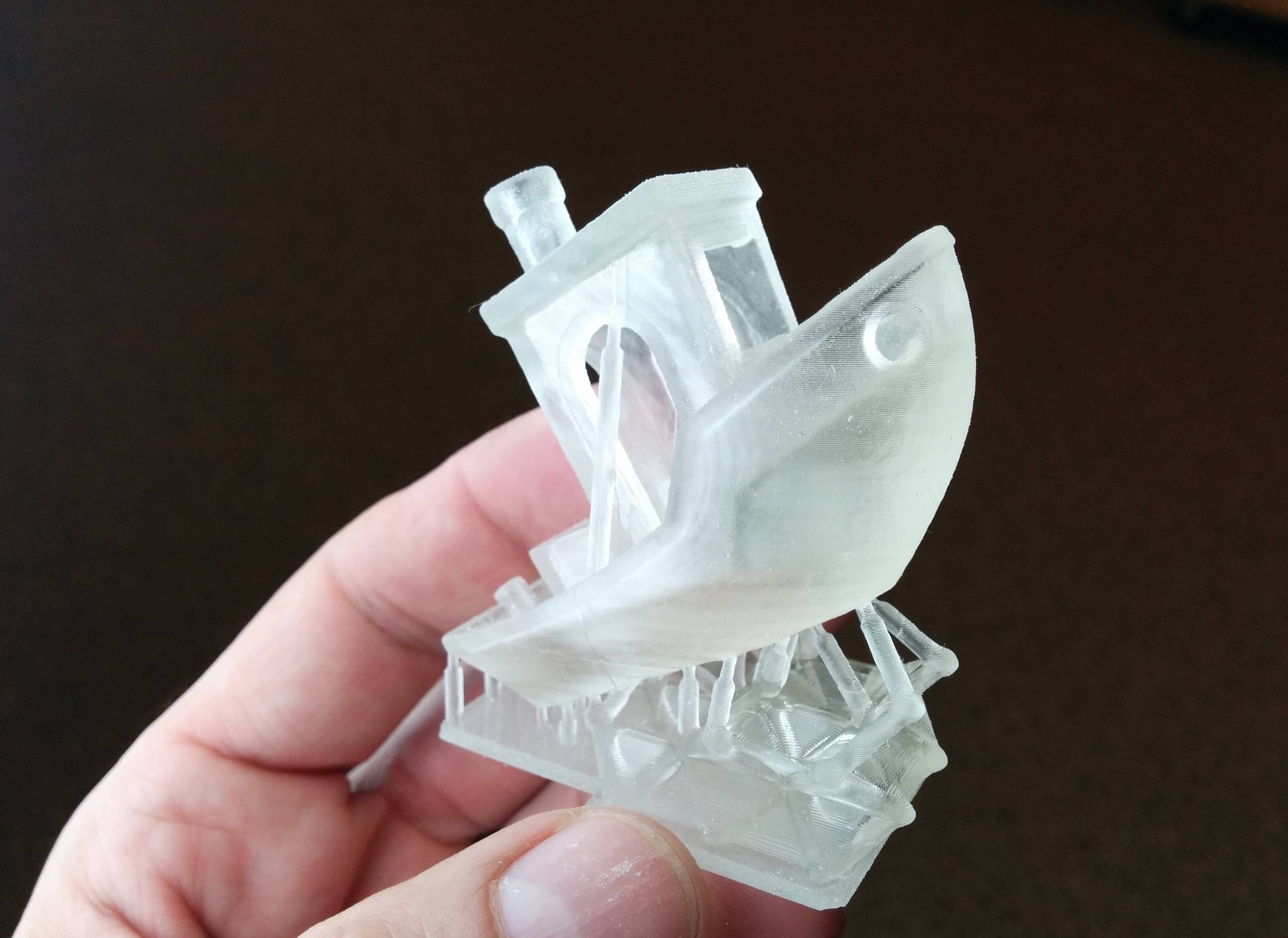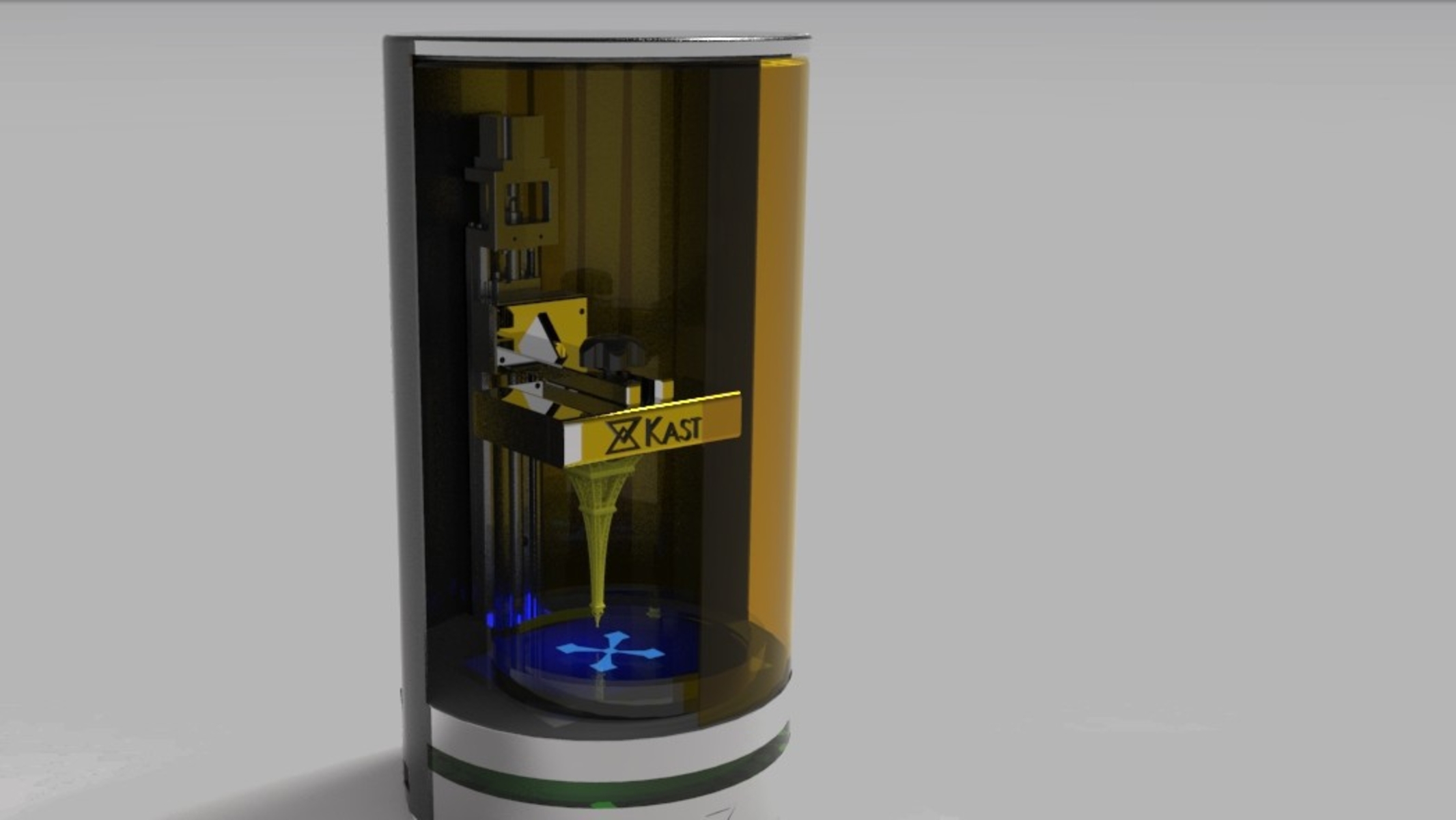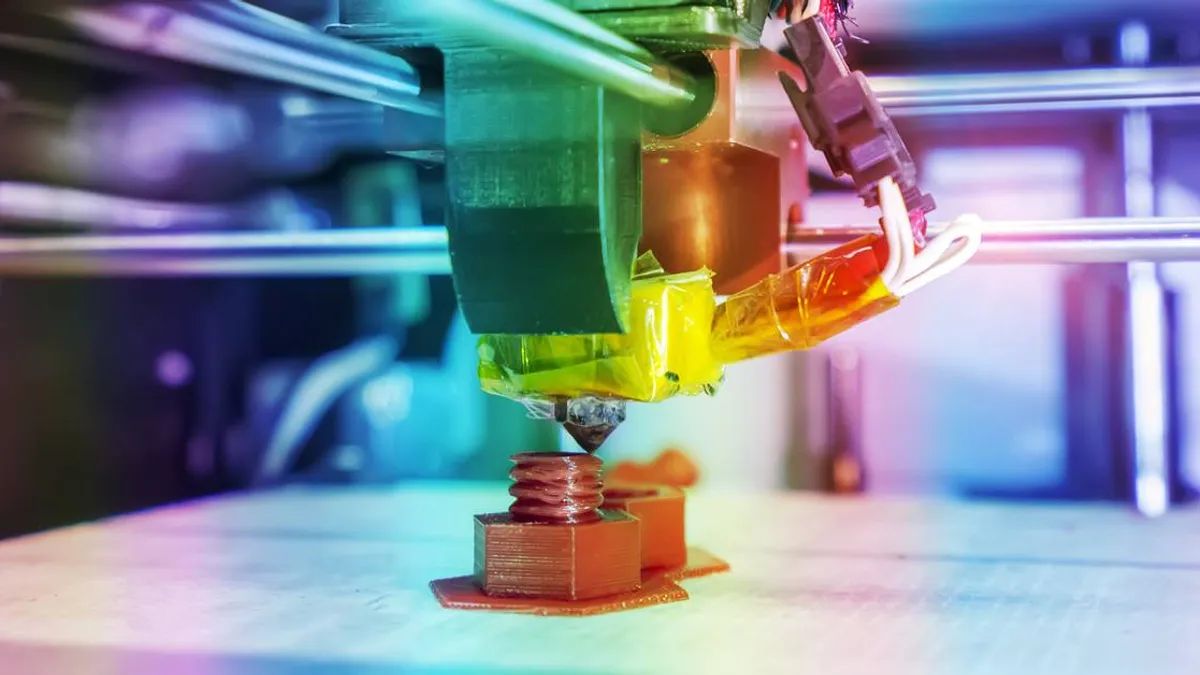Introduction
3D printing, also known as additive manufacturing, has emerged as a groundbreaking technology that is revolutionizing the manufacturing industry. Unlike traditional manufacturing processes that involve subtracting material from a solid block or molding it into shape, 3D printing enables the creation of three-dimensional objects by layering materials on top of each other based on digital blueprints.
This disruptive technology offers immense potential for transforming various industries, including aerospace, automotive, healthcare, and consumer goods. It allows for the production of complex and customized parts with unprecedented precision and efficiency.
In recent years, 3D printing has gained significant traction due to advancements in technology, increased accessibility, and reduced costs. The adoption of this technology by manufacturers worldwide is accelerating, and its impact on the industry cannot be overlooked.
This article will explore how 3D printing is transforming the manufacturing landscape. We will discuss the benefits it brings, as well as the challenges and limitations that need to be addressed. Finally, we will look at future opportunities and trends in 3D printing that hold the potential to reshape manufacturing in the years to come.
How Does 3D Printing Work?
At its core, 3D printing involves a sequential layering process to construct a physical object from a digital model. This process generally consists of the following steps:
- Design: The first step in the 3D printing process is designing a 3D model using Computer-Aided Design (CAD) software. This digital model serves as a blueprint for the physical object.
- Slicing: Once the design is complete, the software slices the 3D model into thin, horizontal layers, each representing a cross-section of the final object.
- Preparation: The 3D printer prepares for the printing process by heating or melting the chosen printing material, usually plastic filament or resin. The material is fed through a nozzle or vat and is ready for deposition.
- Printing: The 3D printer starts printing the object layer by layer. It follows the instructions from the sliced 3D model, depositing the molten material or solidifying the resin to form each layer. This process is repeated until the entire object is built.
- Post-processing: Once the printing is complete, there may be some post-processing steps required. This can involve removing support structures, smoothing rough surfaces, or applying additional finishes to achieve the desired level of quality and functionality.
The printing process itself can vary depending on the technology used, which includes methods such as fused deposition modeling (FDM), stereolithography (SLA), selective laser sintering (SLS), and others. Each method utilizes different materials and processes to achieve the desired result.
Despite the various techniques available, the underlying principle remains the same: the layer-by-layer construction of an object based on a digital model. This unique approach allows for a wide range of shapes, complexities, and customization options that traditional manufacturing techniques struggle to match.
Benefits of 3D Printing in Manufacturing
3D printing has revolutionized the manufacturing industry by offering a host of benefits that traditional manufacturing methods simply cannot match. Let’s explore some of the key advantages:
Increased Design Flexibility
One of the most significant advantages of 3D printing is the level of design freedom it provides. Traditional manufacturing techniques often impose design limitations due to the constraints of tooling and production processes. With 3D printing, complex geometries and intricate details can be easily achieved, allowing for highly customized and innovative designs.
Reduced Costs
While the initial investment in 3D printing equipment and software may be higher, the overall manufacturing costs can be significantly reduced in the long run. 3D printing eliminates the need for expensive molds, tooling, and assembly lines, reducing production costs, especially for low-volume or custom-made products. Additionally, efficiency gains and material savings contribute to cost reductions, making 3D printing a cost-effective manufacturing solution.
Faster Prototyping and Production
3D printing enables rapid prototyping and iteration cycles, allowing manufacturers to bring products to market faster. With traditional manufacturing methods, prototyping often requires extensive tooling and lead times. 3D printing eliminates these issues by enabling quick and cost-effective production of prototypes, facilitating faster design validation and product improvements.
Customization and Personalization
3D printing enables mass customization and personalization of products. Each item can be easily modified or customized without incurring additional costs or delays. This level of flexibility allows for the creation of unique, tailored products that meet individual customer needs and preferences, enhancing customer satisfaction and loyalty.
Streamlined Supply Chain
By implementing 3D printing, manufacturers can optimize their supply chains and reduce dependency on traditional suppliers. With on-demand production capabilities, companies can manufacture parts locally and eliminate the need for extensive warehousing and transportation. This not only reduces lead times but also minimizes the risks associated with inventory management and obsolescence.
Less Material Waste
3D printing is an inherently sustainable manufacturing method as it only uses the exact amount of material required for each product. Unlike traditional manufacturing, where excess material is often wasted during cutting or machining processes, 3D printing builds objects layer by layer, ensuring material efficiency and reducing waste.
These benefits of 3D printing demonstrate its potential to revolutionize the manufacturing industry, offering unparalleled design flexibility, cost savings, faster production cycles, customization options, supply chain optimization, and sustainable manufacturing practices.
Increased Design Flexibility
One of the key advantages that 3D printing brings to the manufacturing industry is the unparalleled level of design flexibility it offers. Traditional manufacturing methods often have limitations when it comes to complex geometries or intricate details. These limitations arise from the constraints of tooling, molding, and assembly processes.
3D printing, on the other hand, allows for the production of highly customized and innovative designs. With its layer-by-layer construction approach, 3D printing can create complex shapes and intricate structures that would be difficult or even impossible to achieve with traditional methods. The design freedom provided by 3D printing opens up a world of possibilities for product designers and engineers.
Complex geometries are particularly well-suited for 3D printing. The ability to create internal cavities, hollow structures, and intricate lattice patterns enables the production of lightweight yet strong components. This has significant implications for industries such as aerospace and automotive, where weight reduction can lead to improved fuel efficiency and overall performance.
Moreover, 3D printing allows for the consolidation of multiple parts into a single component. Traditional manufacturing methods often require the assembly of multiple pieces to achieve the desired functionality. With 3D printing, parts can be designed as a single, integrated unit, reducing assembly time, improving structural integrity, and minimizing the risk of component failure.
The design flexibility of 3D printing is not limited to shapes and structures. It also extends to material selection. Depending on the printing technology used, a wide range of materials can be utilized, including plastics, metals, ceramics, and even bio-compatible materials. This versatility in material options empowers designers to choose the most appropriate material for each specific application, considering factors such as strength, flexibility, heat resistance, or biocompatibility.
Additionally, 3D printing enables the inclusion of functional features within the design itself. For example, intricate channels and fluidic pathways can be integrated into components, allowing for direct fluid flow without the need for additional tubing or connectors. This can be particularly advantageous in medical devices or complex fluid systems.
The increased design flexibility of 3D printing opens up new horizons for innovation. Designers are no longer constrained by the limitations of traditional manufacturing methods, giving them the freedom to push boundaries and explore new possibilities. This can lead to the development of products that are not only more visually appealing but also more functional, efficient, and tailored to meet specific customer needs.
Reduced Costs
One of the significant benefits that 3D printing brings to the manufacturing industry is the potential for significant cost reductions. While the initial investment in 3D printing equipment and software may be higher compared to traditional manufacturing methods, the overall cost savings can be substantial in the long run.
One of the primary ways that 3D printing reduces costs is by eliminating the need for expensive molds and tooling. Traditional manufacturing methods often require the creation of specialized molds and tools, which can be costly and time-consuming to produce. With 3D printing, products can be directly printed from a digital design, eliminating the need for costly tooling. This is especially beneficial for low-volume production runs or custom-made products, as the cost of creating molds and tooling can be prohibitive.
Another cost-saving aspect of 3D printing is the reduction in material waste. Traditional manufacturing processes often involve cutting or machining raw material to shape, which results in significant material waste. In contrast, 3D printing builds objects layer by layer, precisely depositing the required amount of material, thereby minimizing waste. This not only reduces material costs but also aligns with sustainable manufacturing practices.
Additionally, 3D printing can contribute to cost savings through improved production efficiency. The additive nature of 3D printing allows for the simultaneous printing of multiple parts or products, reducing the required production time. This can result in faster production cycles, enabling manufacturers to respond more quickly to market demands and reduce inventory holding costs.
Furthermore, 3D printing enables the production of complex assemblies as a single, integrated unit. Traditional manufacturing often involves the assembly of multiple components, which can be time-consuming and labor-intensive. By consolidating parts into a single printed component, manufacturers can reduce assembly costs and potential points of failure.
Lastly, 3D printing also offers the advantage of on-demand production. Companies can print products only when there is a demand for them, reducing the need for large-scale inventory storage and associated costs. This just-in-time manufacturing approach can improve cash flow and inventory management.
While it is important to consider the initial costs of implementing 3D printing technology, the long-term cost savings and efficiencies it can provide make it an attractive option for many manufacturers. As the technology continues to advance and become more accessible, the cost advantages of 3D printing are expected to become even more pronounced.
Faster Prototyping and Production
3D printing revolutionizes the prototyping and production process by offering significant time savings compared to traditional manufacturing methods. This speed advantage has transformed product development cycles and accelerated time to market for many manufacturers.
One of the key advantages of 3D printing is the ability to rapidly create prototypes. In traditional manufacturing, prototyping often involves the creation of molds, tooling, or other time-consuming processes. These steps can add weeks or even months to the development timeline. With 3D printing, however, prototypes can be fabricated directly from a digital design, bypassing the need for these additional steps. This enables designers and engineers to quickly iterate and refine their designs, accelerating the overall product development process.
Furthermore, 3D printing allows for the creation of complex geometries and intricate structures that would be challenging or impossible to achieve using traditional manufacturing methods. This eliminates the need for assembling multiple components, further reducing the time required for prototyping. By having a single printed prototype, manufacturers can evaluate the functionality, test the design, and identify any potential issues early in the development process.
The speed advantage of 3D printing extends beyond prototyping to production as well. Traditional manufacturing methods often involve lengthy lead times due to tooling, setup, and production line constraints. 3D printing, on the other hand, allows for rapid setup and production, removing the need for specialized tooling or complex assembly lines.
With 3D printing, manufacturers have the flexibility to manufacture products on-demand and in small quantities. This on-demand production capability eliminates the need for maintaining large inventories, reducing storage costs and minimizing the risk of obsolescence. Manufacturers can quickly respond to customer orders or changing market demands, enabling a more agile and efficient production process.
Additionally, 3D printing enables decentralized manufacturing. Instead of relying on centralized production facilities and global supply chains, companies can adopt a distributed manufacturing model. This means that products can be manufactured locally or closer to the point of demand, reducing shipping times and costs. This decentralization also mitigates the risks associated with disruptions in the global supply chain, such as natural disasters or political instability.
In summary, 3D printing offers significantly faster prototyping and production times compared to traditional manufacturing methods. By eliminating the need for molds, tooling, and complex assembly lines, 3D printing enables rapid iteration and refinement of designs and facilitates on-demand manufacturing. These time-saving benefits have revolutionized product development cycles and increased the speed at which manufacturers can bring their products to market.
Customization and Personalization
One of the most significant advantages of 3D printing in manufacturing is the ability to achieve high levels of customization and personalization. Unlike traditional manufacturing methods that often involve mass production of standardized products, 3D printing allows for the creation of unique and tailor-made items that meet individual customer preferences and needs.
With 3D printing, each product can be easily modified or customized without incurring additional costs or delays. Designers can make adjustments to the digital model, such as altering dimensions, adding or removing features, or incorporating personalized engravings or patterns. These modifications can be easily implemented and integrated into the production process, enabling manufacturers to create custom products efficiently and cost-effectively.
The ability to customize and personalize products has significant implications across various industries. In the healthcare field, for example, 3D printing allows for the creation of patient-specific medical devices, prosthetics, and orthotics. Custom-fit implants and dental restorations can be designed to match the unique anatomy of each patient, improving comfort, functionality, and overall patient outcomes.
Furthermore, 3D printing enables mass customization, which strikes a balance between mass production and individualization. Manufacturers can create a range of products with similar core designs but offer customization options to meet specific customer preferences. This can be applied to consumer goods such as electronics, fashion, or home decor, where customers can personalize their purchases with color choices, patterns, or even unique designs.
In addition to customization, 3D printing allows for personalization at a more intimate level. Products can be tailored to reflect an individual’s preferences, style, or even biometric data. Personalized jewelry, custom-made fashion accessories, or even individualized smartphone cases are just a few examples of how 3D printing can bring uniqueness and individuality to consumer products.
Moreover, the ability to rapidly prototype customized designs with 3D printing can support the development of user-centric products. Manufacturers can involve customers in the design process, gathering feedback and insights to create products that truly fulfill their needs. This customer-centric approach enhances customer satisfaction and loyalty, as customers feel more connected to the products they purchase.
3D printing, with its customization and personalization capabilities, has the potential to transform the relationship between manufacturers and consumers. By enabling individualized products and giving customers more control over the design process, it creates a more engaging and tailored experience for consumers. As technology continues to advance, the possibilities for customization and personalization through 3D printing are only expected to expand further.
Streamlined Supply Chain
3D printing has the potential to revolutionize supply chain management by offering a more streamlined and decentralized approach to manufacturing. Traditional manufacturing often relies on centralized production facilities and extensive global supply chains, leading to challenges such as long lead times, high transportation costs, and inventory management complexities.
With 3D printing, manufacturers can optimize their supply chains by adopting a more local and on-demand production model. Instead of shipping products from centralized manufacturing facilities to various locations, products can be produced locally or closer to the point of demand. This reduces transportation costs and lead times, making it possible to respond faster to customer orders and market fluctuations.
By implementing 3D printing, companies can reduce dependency on external suppliers and minimize the risks associated with global supply chain disruptions. The ability to produce components or products in-house or locally reduces dependence on third-party suppliers and their associated lead times and reliability issues. This decentralization and localization of production help to mitigate risks related to transportation delays, geopolitical tensions, or natural disasters that can disrupt traditional supply chains.
3D printing also offers advantages in terms of inventory management. With traditional manufacturing, maintaining a large inventory is often necessary to meet customer demand and account for potential delays in the supply chain. However, this can lead to high inventory holding costs and the risk of obsolete inventory. With 3D printing, products can be manufactured on-demand, reducing the need for extensive inventory storage and helping to optimize inventory levels.
Furthermore, the streamlined supply chain enabled by 3D printing can enhance sustainability efforts. By producing goods locally, carbon emissions associated with transportation and logistics are significantly reduced. Additionally, 3D printing can minimize material waste as it only uses the exact amount of material needed to produce each item. This alignment with sustainable manufacturing practices provides an environmentally friendly approach to production.
Another benefit of a streamlined supply chain brought about by 3D printing is the flexibility it offers in meeting fluctuating demand. Manufacturers can quickly adapt production to match market trends and consumer preferences. This agile response allows companies to minimize the risk of overproduction while ensuring that products are available when and where consumers need them.
In summary, 3D printing disrupts traditional supply chain practices by offering a decentralized and on-demand production model. By reducing dependency on external suppliers, minimizing transportation costs and lead times, optimizing inventory management, and enhancing sustainability efforts, 3D printing provides manufacturers with a more streamlined and efficient supply chain. As the technology continues to advance, the benefits of a streamlined supply chain through 3D printing will become increasingly significant in the manufacturing industry.
Less Material Waste
3D printing offers a notable advantage in terms of material efficiency and waste reduction compared to traditional manufacturing methods. Traditional manufacturing processes often involve cutting or machining raw material, resulting in significant amounts of wasted material. In contrast, 3D printing operates on an additive principle, which means that material is only deposited where it is needed, minimizing waste.
By building products layer by layer, 3D printing ensures that material consumption is optimized. Unlike traditional manufacturing, where excess material is often discarded during the cutting or machining process, 3D printing uses only the exact amount of material required to produce the final object. This minimization of waste not only leads to cost savings but also aligns with sustainable manufacturing practices.
Another aspect that contributes to less material waste in 3D printing is the ability to create complex geometries and hollow structures. Traditional manufacturing methods would require more material to create such designs, resulting in increased waste. However, with 3D printing, intricate lattice structures and internal cavities can be produced without excessive material usage. This enables lightweight yet strong components to be built, reducing material waste while maintaining structural integrity.
Furthermore, 3D printing allows for the recycling and reuse of materials. Some 3D printing technologies, such as fused deposition modeling (FDM), use thermoplastics as the printing material. These thermoplastics can be melted down and re-extruded, making it possible to recycle and reuse the material for future prints. This closed-loop approach reduces waste and promotes a circular economy mindset.
In addition to minimizing waste during production, 3D printing also enables better inventory management. Traditional manufacturing often relies on mass production and maintaining a large inventory of finished goods. This can lead to obsolescence if demand changes or if products become outdated. With 3D printing, products can be printed on-demand, reducing the need for extensive inventory storage and minimizing waste related to obsolete goods.
The reduction of material waste in 3D printing not only benefits manufacturers economically but also has positive environmental implications. The efficient use of material resources helps to conserve natural resources and reduce carbon emissions associated with material production. Additionally, the decreased waste footprint contributes to sustainable manufacturing practices and aligns with broader efforts to minimize the environmental impact of industrial processes.
In summary, 3D printing significantly reduces material waste compared to traditional manufacturing methods. Its additive nature ensures optimal material utilization, the ability to create complex geometries without excessive material usage, and opportunities for material recycling and reuse. By minimizing waste, 3D printing offers both economic benefits and environmental advantages, making it a more sustainable alternative in the manufacturing industry.
Implications for Intellectual Property
3D printing presents unique challenges and implications for intellectual property (IP) rights. The ability to reproduce physical objects quickly and easily using 3D printing technology raises concerns about copyright infringement, counterfeiting, and the protection of designs and patents.
One of the primary concerns in relation to 3D printing and IP is the unauthorized reproduction of copyrighted objects. With the availability of 3D models and digital files on the internet, individuals can reproduce copyrighted products without proper authorization or licensing. This poses a significant challenge for companies that rely on selling physical products, as their designs can be easily replicated and distributed without their permission.
Furthermore, 3D printers can be used to create counterfeit products that closely mimic the appearance and functionality of genuine products. This raises concerns for brand owners who have invested significant time and resources in establishing and protecting their brand identity. The ease of counterfeiting through 3D printing can potentially undermine consumer trust in legitimate brands and lead to revenue losses.
Protecting designs and patents also becomes more complex in the context of 3D printing. The digital nature of 3D files and the ease of sharing them make it challenging to track and control the use of proprietary designs. Companies must consider how they can safeguard their intellectual property when 3D printing technology allows for easy replication and distribution of their designs.
To address these challenges, various strategies and initiatives have emerged. Companies have started considering alternative business models, such as selling digital files instead of physical products or developing secure licensing systems to control access to design files. Some have also turned to digital watermarking or encryption techniques to protect their intellectual property and enable traceability.
Legislation and legal frameworks are continuously evolving to address these new challenges presented by 3D printing. Intellectual property laws are being adapted to consider the unique aspects and implications of 3D printing technology. However, striking the right balance between protecting intellectual property rights and fostering innovation and creativity remains an ongoing challenge.
Education and awareness also play a crucial role in addressing the implications for intellectual property in 3D printing. By promoting responsible and ethical use of this technology, individuals can be encouraged to respect intellectual property rights and understand the importance of proper licensing and authorization for reproducing copyrighted objects.
In summary, 3D printing presents unique implications for intellectual property rights. The ease of reproducing physical objects raises concerns about copyright infringement and counterfeiting. Protecting designs and patents becomes more complex in a digital environment, where files can be easily shared and replicated. However, through innovative business models, technological advancements, and evolving legal frameworks, efforts are being made to address these challenges and protect intellectual property in the age of 3D printing.
Challenges and Limitations of 3D Printing in Manufacturing
While 3D printing offers numerous benefits, it also faces certain challenges and limitations that need to be addressed for wider adoption in the manufacturing industry. These challenges include the following:
Quality Control and Standards
Maintaining consistent quality standards in 3D printing can be challenging. The accuracy and reliability of printed objects can vary depending on numerous factors, including printer calibration, material properties, and design complexity. Ensuring consistent quality requires rigorous testing, calibration, and adherence to established industry standards.
Limited Material Choices
Although 3D printing technologies continue to advance, the range of available materials is still more limited compared to traditional manufacturing methods. While there is a wide selection of materials available for 3D printing, they may not possess the exact characteristics or properties required for certain applications. This limitation poses challenges for industries that require specific material properties, such as high temperature resistance, biocompatibility, or electrical conductivity.
Production Scalability
While 3D printing is well-suited for low-volume or customized production, it currently faces challenges in scaling up for large-scale manufacturing. The time required to print each individual item can be longer compared to traditional manufacturing methods, making it less efficient for high-volume production. Improving print speeds and optimizing manufacturing processes are crucial for enabling 3D printing to compete with mass production methods.
Education and Training Requirements
The adoption of 3D printing in manufacturing requires a skilled workforce with expertise in both design and operation of the technology. The need for training and education in 3D printing techniques, software, materials, and post-processing is essential. Widespread adoption of 3D printing in manufacturing will require accessible and comprehensive training programs to equip professionals with the necessary skills to fully leverage the technology.
Additionally, addressing the challenges of intellectual property protection, copyright infringement, and counterfeiting is crucial for the long-term viability and acceptance of 3D printing. Developing robust mechanisms to protect intellectual property rights while fostering innovation and creativity is an ongoing challenge for manufacturers and policymakers.
Despite these challenges and limitations, the potential benefits of 3D printing in manufacturing are significant. As technology continues to advance, these challenges will be addressed through further research, development, and collaboration among industry stakeholders, enabling the broader adoption of 3D printing and unlocking its full potential in revolutionizing the manufacturing industry.
Quality Control and Standards
Quality control and maintaining consistent standards are significant challenges in 3D printing, as the accuracy and reliability of printed objects can vary depending on several factors. Ensuring consistent quality throughout the manufacturing process is crucial for the wider adoption of 3D printing in the industry.
One of the challenges in quality control is printer calibration. Properly calibrating 3D printers is essential to achieve accurate and precise prints. Factors such as bed leveling, extruder temperature, print speed, and layer height must be carefully calibrated to ensure that the printed object matches the specifications of the digital design. Failure to calibrate printers correctly can result in dimensional inaccuracies, surface defects, or even print failures.
Material properties are also critical in achieving consistent quality. Different materials have distinct characteristics, such as strength, flexibility, or heat resistance. Ensuring that the chosen material has the desired properties for the intended application is crucial for producing functional and reliable components. Additionally, material inconsistencies, such as variations in composition or batch-to-batch variations, can affect the final quality of the printed objects.
Design complexity is another factor that influences quality in 3D printing. Complex designs with intricate details or overhangs can pose challenges during the printing process. Lack of proper support structures or inadequate design modifications can lead to print failures, distorted dimensions, or surface imperfections. Ensuring proper design considerations and conducting thorough testing are essential for achieving high-quality prints.
Adherence to established industry standards is vital in ensuring the quality and reliability of 3D-printed parts. Standardization organizations, such as ASTM International, are actively working to develop guidelines and testing procedures specific to additive manufacturing. These standards cover aspects such as material properties, manufacturing processes, and testing methods. Widespread adoption and compliance with these standards are crucial for building trust and confidence in 3D printing technology.
To overcome the challenges in quality control, manufacturers must implement comprehensive quality management systems. This includes developing proper quality control procedures, performing regular printer maintenance and calibration, using verified and consistent materials, and validating designs through rigorous testing and verification processes. Additionally, investing in advanced inspection and measurement techniques, such as 3D scanning or computed tomography, can aid in quality assurance efforts.
Continuous research and development in 3D printing technology are also necessary to improve quality control. Advancements in hardware, software, and material science can enable better accuracy, reliability, and consistency in the printing process. Collaboration among researchers, manufacturers, and standardization organizations is essential to develop and refine quality control methods and standards specific to 3D printing.
In summary, quality control and maintaining consistent standards are challenges that need to be addressed in 3D printing. Proper printer calibration, material selection, design considerations, and adherence to industry standards are crucial to achieving high-quality prints. Implementing comprehensive quality management systems and investing in research and development can further enhance the quality control in 3D printing and ensure its wider acceptance in the manufacturing industry.
Limited Material Choices
While 3D printing continues to evolve and expand its capabilities, one of the challenges it faces is the limited range of available materials compared to traditional manufacturing methods. Although there is a wide variety of materials available for 3D printing, they may not possess the exact characteristics or properties required for specific applications.
Currently, the most commonly used materials in 3D printing include various types of plastics, metals, ceramics, and resins. Each material has its own strengths, weaknesses, and limitations, making material selection a critical consideration in the 3D printing process. However, the range of materials available for 3D printing is still more limited compared to the extensive range of materials that can be used in traditional manufacturing.
When choosing a material for 3D printing, considerations such as mechanical properties, thermal properties, chemical resistance, and biocompatibility are important. For example, in industries such as aerospace or automotive, where high strength and temperature resistance are crucial, materials like titanium or carbon fiber reinforced polymers may be preferred. In the medical field, biocompatible materials that can withstand sterilization processes may be necessary for producing implants or surgical instruments.
Another limitation in material choices for 3D printing is the availability of specific materials in the form of filaments or resins compatible with 3D printers. Some materials may be challenging to process or require specialized printing equipment, limiting their practical use in 3D printing applications. The development and optimization of printing parameters and equipment for a wider range of materials are ongoing areas of research and development in the field of additive manufacturing.
However, it is important to note that advancements are being made to expand the range of materials that can be used in 3D printing. Researchers are constantly exploring new materials and developing techniques to enable printing with more diverse and advanced materials. Some examples include bioactive polymers for tissue engineering, conductive materials for electronics, and even food-grade materials for culinary applications.
To address the limitations in material choices, it is crucial for manufacturers and researchers to continue investing in material development, characterization, and optimization for 3D printing. Collaborations between material scientists, printer manufacturers, and industry stakeholders can help expand the range of materials available for 3D printing, making it a more viable and versatile manufacturing solution.
Furthermore, the development of standardized material testing and characterization methods specific to 3D printing can aid in material selection and verification. These standards can provide manufacturers and users with reliable information on material performance, ensuring that the selected materials meet the required specifications and performance criteria.
In summary, the range of materials available for 3D printing is currently more limited compared to traditional manufacturing. However, advancements in material development and optimization, as well as collaborative efforts among researchers and industry stakeholders, are expanding the range of materials usable in 3D printing. Addressing the limitations in material choices is crucial to fully unlock the potential of 3D printing across various industries and applications.
Production Scalability
While 3D printing offers significant benefits in terms of customization and flexibility, it currently faces challenges when it comes to scaling up production for large-scale manufacturing. The time required to print each individual item can be longer compared to traditional manufacturing methods, making it less efficient for high-volume production.
One of the primary factors affecting production scalability in 3D printing is print speed. The layer-by-layer nature of 3D printing inherently takes more time compared to traditional manufacturing processes that can produce multiple identical parts simultaneously. Increased print speed is a crucial area of focus for researchers and manufacturers to improve production efficiency and reduce lead times.
Another challenge is the limitations of build volume in 3D printers. The size of the 3D printer’s build platform often dictates the maximum dimensions of the objects that can be printed. This can pose challenges when manufacturing larger, complex components or when scaling up production to meet the demands of mass manufacturing. Manufacturers need to invest in larger printers or develop innovative techniques to overcome these limitations.
Material considerations also play a role in production scalability. Some materials used in 3D printing may have limited availability or may not be suitable for high-volume production due to their cost or technical properties. The development of more cost-effective and performance-enhanced materials will expand the possibilities for large-scale 3D printing and improve its scalability.
To address the challenges of production scalability, several avenues are being explored. One approach is the development of new 3D printing technologies that can inherently achieve faster print speeds while maintaining high-quality output. Continuous printing methods, such as Continuous Liquid Interface Production (CLIP), utilize liquid resins and novel curing methods to achieve faster print speeds.
Improvements in print speed can also be achieved by optimizing printing parameters and design considerations. Fine-tuning settings such as layer height, print speed, and infill density can help strike a balance between print speed and part quality. Design modifications such as optimizing support structures and reducing unnecessary material usage can also improve overall production efficiency.
Another strategy to enhance production scalability is the adoption of hybrid manufacturing approaches. By combining traditional manufacturing methods, such as CNC machining or injection molding, with 3D printing, companies can leverage the benefits of 3D printing for complex or customized parts while using traditional manufacturing for high-volume production of standardized components. This hybrid approach allows for both flexibility and scalability, depending on the specific requirements of each part.
Advancements in robotics and automation also hold promise for improving production scalability in 3D printing. The integration of robotic systems can enable the simultaneous operation of multiple 3D printers, reducing the overall production time. Automated post-processing and quality control procedures can further enhance the efficiency and scalability of 3D printing workflows.
Efforts are underway to develop standards and guidelines for production scalability in 3D printing. This includes the development of manufacturing protocols and verification processes to ensure consistent quality and repeatability across large-scale production. Collaborative efforts between researchers, manufacturers, and industry stakeholders are essential to drive innovation and address the challenges of production scalability in the field of 3D printing.
In summary, while 3D printing offers significant advantages, challenges exist when it comes to production scalability. Print speed, build volume limitations, and material considerations present obstacles that need to be overcome to enable large-scale manufacturing using 3D printing. Innovations such as faster printing technologies, hybrid manufacturing approaches, and advancements in robotics and automation are being explored to enhance scalability and drive the adoption of 3D printing for mass production applications.
Education and Training Requirements
The widespread adoption of 3D printing in manufacturing requires a skilled workforce with specialized knowledge in both design and operation of the technology. The successful integration of 3D printing into manufacturing workflows necessitates education and training programs to equip professionals with the necessary skills to fully leverage the potential of this rapidly advancing technology.
Education and training play a crucial role in preparing individuals for the challenges and opportunities presented by 3D printing. Starting from academic institutions, incorporating 3D printing into curricula at various levels, including engineering, design, and manufacturing programs, helps students develop a solid foundation in additive manufacturing principles. Providing hands-on experience with 3D printers and design software enables students to develop the necessary technical skills and foster innovative thinking.
Continuing education and professional development initiatives are also essential to keep up with the evolving nature of 3D printing technology. These programs can take the form of workshops, seminars, or certification courses that focus on specific aspects of 3D printing, such as design optimization, printer operation, material selection, and post-processing techniques. Industry associations, manufacturers, and educational institutions can collaborate to develop comprehensive training programs that address the needs of professionals working in various sectors of the manufacturing industry.
Training programs should cover a wide range of topics related to 3D printing, including materials science, printer hardware and software, printing techniques, quality control, post-processing, and safety protocols. It is also important to emphasize the principles of design for additive manufacturing (DFAM), helping designers optimize their creations specifically for 3D printing. This includes considerations such as structural integrity, support structures, and material utilization.
In addition to technical skills, education and training in 3D printing should also include an understanding of the broader implications and ethical considerations surrounding additive manufacturing. This includes addressing intellectual property concerns, copyright infringement, and the responsible use of the technology. Ethical training can help professionals navigate the complexities of additive manufacturing and ensure adherence to legal and ethical standards.
Industry collaboration is crucial for the development and dissemination of educational resources and best practices in 3D printing. Manufacturers, educators, and researchers can collaborate to develop standardized curricula, training materials, and case studies that reflect real-world applications of 3D printing in manufacturing. These resources can provide comprehensive knowledge and practical insights to support the effective implementation of 3D printing technologies.
Creating a supportive learning environment through networking opportunities, knowledge sharing platforms, and communities of practice is also beneficial in fostering collaboration and innovation within the 3D printing community. This enables professionals to exchange ideas, share experiences, and collectively address challenges and opportunities associated with additive manufacturing.
In summary, education and training are critical for unlocking the full potential of 3D printing in manufacturing. Incorporating 3D printing into academic curricula, providing continuing education opportunities, and promoting industry collaboration are key to developing a skilled workforce capable of harnessing the capabilities of additive manufacturing. By equipping professionals with the necessary skills and knowledge, we can ensure the effective integration of 3D printing technologies and drive innovation in the manufacturing industry.
Future Opportunities and Trends
The future of 3D printing in manufacturing holds exciting opportunities and promises to reshape the industry in various ways. As the technology continues to advance and become more accessible, several key trends and opportunities are emerging:
Industrial-Scale 3D Printing
Advancements in 3D printing technology are leading to the development of larger, faster, and more efficient printers. These industrial-scale 3D printers have the potential to revolutionize high-volume manufacturing by offering faster production speeds, larger build volumes, and improved material options. As these printers become more affordable and reliable, they will enable manufacturers to fully embrace the benefits of additive manufacturing at a mass production level.
Hybrid Manufacturing
The integration of 3D printing with traditional manufacturing processes, known as hybrid manufacturing, is gaining momentum. This approach combines the strengths of both technologies, leveraging 3D printing for complex or customized parts, while using traditional manufacturing for high-volume production. The combination of these two approaches offers a cost-effective and flexible manufacturing solution that combines the best of both worlds.
Advanced Materials and Applications
The development of new materials and the expansion of material options will significantly impact the future of 3D printing. Researchers are working on enhancing the material properties, such as strength, conductivity, flexibility, and heat resistance, to enable the production of more functional and specialized parts. This opens up opportunities for industries such as aerospace, healthcare, electronics, and automotive to leverage 3D printing for the creation of custom-tailored components with superior performance characteristics.
Multi-Material and Multi-Color Printing
The ability to print with multiple materials or colors within a single print job is an emerging trend in 3D printing. This enables the creation of complex, multi-component objects in a single print, eliminating the need for assembly or post-processing. Multi-material printing enables the incorporation of different material properties into a single object, expanding the design possibilities and functional capabilities of 3D-printed parts.
Integration of 3D Printing in Supply Chains
As 3D printing becomes more accessible and affordable, the integration of additive manufacturing into supply chains is expected to increase. This includes the use of distributed manufacturing, where components are printed closer to the point of demand, reducing transportation costs and lead times. The adoption of 3D printing technology in supply chains will enable more agile manufacturing processes, reducing inventory needs, and enabling on-demand production.
Software Advancements and Design Optimization
Improvements in design software and optimization tools specific to 3D printing will continue to drive innovation and efficiency. These advancements will enable designers to fully exploit the design freedom offered by additive manufacturing, optimize structures for weight reduction, improve performance, and reduce material usage. Increasing automation and artificial intelligence will also enable generative design methods that automatically generate optimal designs based on specified parameters.
In summary, the future of 3D printing in manufacturing is filled with opportunities and promising trends. Industrial-scale capabilities, hybrid manufacturing approaches, advanced materials, multi-material printing, supply chain integration, software advancements, and design optimization are expected to drive the adoption and evolution of additive manufacturing. With continued research, development, and collaboration, 3D printing has the potential to revolutionize the manufacturing industry, offering increased customization, improved production efficiencies, and enhanced product performance.
Conclusion
3D printing has emerged as a transformative technology with significant implications for the manufacturing industry. Its ability to produce complex, customized, and functional objects with speed and efficiency has opened up new possibilities and opportunities. Throughout this article, we have explored the benefits, challenges, and future trends associated with 3D printing in manufacturing.
From increased design flexibility to reduced costs, 3D printing offers unique advantages that cannot be easily replicated by traditional manufacturing methods. The ability to create intricate geometries, consolidate multiple components, and customize products to individual specifications enables manufacturers to deliver innovative and tailored solutions to consumers. By streamlining supply chains, minimizing material waste, and enhancing supply chain resilience, 3D printing is reshaping the manufacturing landscape.
However, challenges such as quality control, limited material choices, production scalability, and the protection of intellectual property must be addressed for wider adoption and acceptance of 3D printing in the industry. Continued research, collaboration, and education are vital to overcome these challenges and unlock the full potential of additive manufacturing.
The future of 3D printing in manufacturing holds significant promise. Advancements in technology, materials, software, and design optimization will continue to drive innovation and open up new opportunities. Industrial-scale 3D printers, hybrid manufacturing approaches, multi-material and multi-color printing solutions, and the integration of 3D printing in supply chains are expected to become increasingly prevalent.
In conclusion, 3D printing is revolutionizing the manufacturing industry by offering breakthrough capabilities in design, production speed, customization, and supply chain efficiencies. As the technology continues to advance, it will become an integral part of the manufacturing process, enabling manufacturers to embrace new possibilities, reduce costs, and deliver innovative products that meet the demands of an ever-evolving market.







